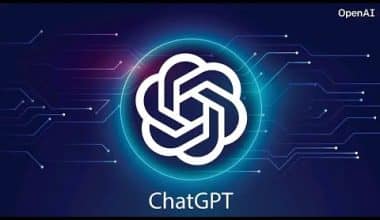When it comes to cloud computing, it’s important to understand the differences between various models such as IaaS, PaaS, and SaaS. In particular, PaaS vs SaaS are two models that are often compared and contrasted. PaaS, or platform-as-a-service, offers developers a platform to build and deploy their own applications, while SaaS, or software-as-a-service, provides users with pre-built software applications hosted by a third-party provider. Understanding the distinctions between these two models is crucial for businesses looking to leverage the cloud. Some examples of PaaS include AWS Elastic Beanstalk and Google App Engine, while popular SaaS examples include Salesforce and Microsoft Office 365. By understanding the differences between PaaS vs SaaS and reviewing specific examples, businesses can make informed decisions on which cloud computing models to utilize for their needs.
What Is the Difference Between SAAS Paas and Iaas?
SaaS provides ready-made software hosted by a third party. PaaS offers a platform for building and deploying applications. IaaS delivers cloud-based infrastructure resources. However, each of these cloud computing models varies in its level of control, customization, and management. SaaS is the most user-friendly and requires the least management, while PaaS provides more control and customization options for developers. IaaS offers the most flexibility and control but also requires more management and technical expertise. Ultimately, the choice between SaaS, PaaS, and IaaS depends on the specific needs and resources of a business.
Is Paas Better Than SAAS?
PaaS and SaaS are both common cloud computing paradigms, each with its own set of benefits and drawbacks. PaaS is frequently selected by developers who desire more control over the underlying infrastructure of their apps. With PaaS, developers may more easily adjust their environment and construct their own applications.
SaaS, on the other hand, is better suited for non-technical customers who wish to use pre-built software applications without worrying about the underlying infrastructure. Businesses that lack the capacity to build and maintain their own apps frequently employ this technique. SaaS is also less expensive because users simply pay for what they use.
Finally, whether PaaS is superior to SaaS is determined by the specific demands and goals of the business or organization. PaaS may be a preferable option for businesses that demand bespoke apps with a high level of control. However, for companies looking to cut costs while focusing on essential company tasks, SaaS may be the way to go. In any event, before making a decision, it’s critical to carefully weigh the advantages and disadvantages of each model.
Is Amazon a Paas or SAAS?
AWS (Amazon Web Services) is a comprehensive cloud computing platform that provides a wide range of services. This includes PaaS vs SaaS. AWS offers PaaS services such as AWS Elastic Beanstalk and AWS Lambda. This allows developers to build and deploy their own apps without having to worry about the underlying infrastructure. These services allow for extensive customization and control over the development process.
Aside from PaaS services, AWS also provides SaaS services such as Amazon WorkSpaces, Amazon Chime, and Amazon Connect. These services offer pre-built software programs that consumers can access on a pay-as-you-go basis.
Overall, AWS is a flexible platform that provides PaaS and SaaS services. The decision to employ PaaS or SaaS on AWS is based on the individual demands and goals of the organization. Because of the breadth of its offerings, AWS is now a popular choice for organizations of all kinds. However, wishing to utilize the power of the cloud to better their operations.
What are Examples of Paas?
PaaS (platform-as-a-service) providers on the market include Google App Engine, Heroku, AWS Elastic Beanstalk, Microsoft Azure App Service, and IBM Bluemix. These PaaS products give a platform for developers to build, deploy, and maintain their own apps without having to worry about the underlying infrastructure.
Google App Engine, for example, offers a fully managed platform for developing and delivering online and mobile applications. Developers may create code in popular programming languages like Java, Python, and Node. Js and Google will take care of the rest.
AWS Elastic Beanstalk, on the other hand, enables developers to deploy and manage their applications in AWS. This includes cloud utilizing popular platforms such as Java,.NET, PHP, and Python. It also automates the provisioning of infrastructure resources such as compute instances, load balancers, and databases. This allows you to concentrate on developing code.
Overall, PaaS products like these enable developers to build and deploy apps more quickly and efficiently, and they are becoming more popular as more businesses migrate to the cloud.
Is Netflix a Paas?
Netflix does not provide PaaS (platform-as-a-service), but it is a large user of cloud computing services, including PaaS products. Netflix hosts its streaming infrastructure on Amazon Web Services (AWS). AWS provides a variety of PaaS capabilities that Netflix is likely to utilize to build and deploy its apps.
While Netflix’s specific use of PaaS services is unknown, it is likely that they use PaaS technologies such as AWS Elastic Beanstalk and AWS Lambda to create and deploy their apps more efficiently. These services offer a platform for developers to design and deploy their own apps without worrying about the underlying infrastructure.
While Netflix is not a PaaS supplier, it is a heavy user of cloud computing services and most likely uses PaaS technologies to build and deploy its apps. By providing a faster and more simplified approach to building and deploying apps, PaaS services can help firms like Netflix focus on their core business tasks and improve efficiency.
Is Google Paas or SAAS?
Google provides PaaS (platform-as-a-service) as well as SaaS (software-as-a-service) solutions. Google Cloud Platform (GCP) offers a variety of PaaS services, such as Google App Engine and Google Cloud Functions, that enable developers to design and deploy their own apps without worrying about the underlying infrastructure. These services offer a platform for developers to design and execute their own programs, with Google handling the underlying hardware and software.
Google, in addition to PaaS services, offers a variety of SaaS options, such as Google Workspace (previously known as G Suite), which contains productivity tools such as Gmail, Google Docs, and Google Drive. These are pre-built applications that Google hosts and manages, and users can access them on a pay-as-you-go basis. Google offers both PaaS and SaaS services, making it a versatile cloud computing provider capable of meeting the demands of organizations of all sizes. The decision to employ Google PaaS or SaaS is based on the individual demands and goals of the organization.
Laas, Paas SAAS in Cloud Computing
Cloud computing has transformed how businesses function by enabling on-demand access to computer resources via three basic models: IaaS (infrastructure-as-a-service), PaaS (platform-as-a-service), and SaaS (software-as-a-service).
IaaS gives businesses pay-as-you-go access to virtualized computing resources such as servers, storage, and networking. This concept is popular among firms that wish to decrease hardware expenses while increasing flexibility by leveraging cloud computing’s scalability and availability.
PaaS, on the other hand, gives developers a platform to build, deploy, and manage their own apps without having to worry about the underlying infrastructure. This concept is popular among firms that wish to focus on their core business tasks while saving time and money on infrastructure management.
Finally, SaaS offers pre-built software programs that are hosted and managed by the provider and accessible on a pay-as-you-go basis by users. This technique is popular among firms that wish to cut software expenses and enhance productivity by utilizing off-the-shelf solutions rather than developing their own.
Generally, cloud computing has given businesses of all sizes the capacity to acquire computing resources on-demand and on a pay-as-you-go basis, giving them better flexibility, scalability, and efficiency than traditional computing models. The decision to adopt IaaS, PaaS, or SaaS is based on the individual demands and goals of the organization, and companies should carefully assess their alternatives to ensure they select the model that best suits their needs.
Paas vs SAAS Examples
Here are some examples to illustrate the difference between PaaS vs SaaS.
PaaS Examples
#1. Google App Engine
This is a PaaS offering from Google that allows developers to build and deploy web applications on a fully-managed platform.
#2. Heroku
This is a cloud-based PaaS offering that allows developers to build, deploy, and manage web applications on a scalable and secure platform.
#3. AWS Elastic Beanstalk
This is a PaaS offering from Amazon Web Services (AWS) that allows developers to deploy and manage applications in a scalable and cost-effective manner.
SaaS Examples
#1. Microsoft Office 365
This is a cloud-based SaaS offering that provides users with access to productivity tools like Word, Excel, and PowerPoint on a pay-as-you-go basis.
#2. Salesforce
This is a cloud-based SaaS offering that provides businesses with a range of customer relationship management (CRM) tools on a pay-as-you-go basis.
#3. Zoom
This is a cloud-based SaaS offering that provides users with video conferencing and communication tools on a pay-as-you-go basis. The key difference between PaaS vs SaaS is that PaaS provides a platform for developers to build and deploy their own applications, while SaaS provides pre-built software applications that are hosted and managed by the provider and accessed by users on a pay-as-you-go basis.
FAQs
Is Facebook a PaaS?
Facebook is an example of PaaS. Developers can leverage proprietary APIs to create unique applications for the Facebook platform, which can then be made available to any Facebook user.
Is PaaS better than SaaS?
If the developer has a limited understanding of system management, SAAS is a preferable option. PAAS is for programmers who know how to create software and applications. Security and performance should always be top priorities.
In PaaS, who owns the data?
The PaaS platform is owned and operated by the PaaS provider. The underlying infrastructure is owned and operated by the supplier. They are in charge of developing, deploying, administering, and maintaining the software applications.
Related Articles
- Three Main Types of E-Commerce Software Platforms and How They Differ and Which You Might Need
- INFRASTRUCTURE AS A SERVICE IaaS: Types, Benefits, and Pricing
- Cloud Technology: Beginners Guide to Cloud Technology Solutions
- SAAS BUSINESS MODEL: How it Works, Examples & Template
- SAAS COMPANY: Top Companies, Examples, B2B & Best Employers






